GreenDac TDA1541A from Analogmetric

Lampizator's journey is very close to an end. In the
years of my search
for perfect sound forever, which Philips advertised 29 years ago - I
came full circle and I arrived at .....
the Philips basic datasheet implementation of their magnificent
TDA1541A DAC.
How is it possible?
Well, in my opinion, with which I fully agree by the way, I found out
beyond reasonable doubt that there is NOTHING AT ALL that money can add
to a pure, simple implementation of a naked DAC chip. Be it
TDA1541, 1540, PCM63, PCM1704, CS4397, AD1862, Pulseflow P2028B,
CS4327, PCM1794, or ESS Sabre or any other good one out there. No
amount of "engineering" and marketing, marble, gold, opamps and other
stuff can IMPROVE the signal coming out of a DAC. So we DON'T NEED any
of the stuff. Meaning - expensive gear has nothing to offer. No added
value. The pure signal can only be damaged in one way or another.
Simply speaking - to make a perfect DAC we need this:
1. DAC chip which plays well
2. Power supply within specification - usually just 5V DC.
3. Digital input of data which was not manipulated in ANY WAY - no
oversampling, no upsampling, no reclocking, no DSP. Nothing at all.
4. Final amplification in the form of a one stage voltage amplifier. A
perfect device to do this is a triode, a FET transistor, or maybe
sometimes a very good opamp - just one.
That is all.
To accomplish this we need something that holds this bunch of parts
together - a good PCB.
Why not a player but DAC ? well, the TDA1541A were mounted inside
players produced in the period of 1985-1995 so they are getting long in
the teeth and there are all possible problems with laser, drawer etc.
Investing in a DAC frees us from these problems.
Enter Analogmetric GreenDac
(I call it GreenDac for no better name I can think of)
Analogmetric is a Hong Kong business that sells parts , kits and
counterfeit PCBs of famous designs. This particular PCB which I present
does not seem like a counterfeit of any famous design. EVERY PCB for
TDA must by definition be similar to fulfil requirements of Philips
concept. There is no patent on this design, as there is no patent on
recipe for bread.
We could say that the mother of all TDA designs is Philips CD304-MKII
CD player and its schematics. EVERY product using TDA later (hundreds
of CD players and DACS) was a variation on the same theme.
http://www.analogmetric.com/store/category.php?id=21
So what Analogmetric did was to make the most beautiful, most gorgeous
PCB which has provision for the great TDA DAC and all parts, some
really needed - some not.
Analogmetric offer this PCB in multitude of variants - from empty and
naked to fully working. Choice is yours. The price goes from 15 USD for
the PCB to 270 USD for the whole working product. Any price point in
between is possible - so your purchase is lean meat - only what you
need and nothing you don't need.
Nice idea, isn't it ?
Why Greendac is probably THE ULTIMATE product in all high end commerce?
Well, providing that you have most basic soldering skills - this DAC
can be all you make it. YOU are responsible for its sound. You control
every part, and whether a success or a failure (sonically) - you are
the owner of that process.
So no more tweaking, no more part swapping of the original commercial
product - finally we can put the parts WE WANT, and have zero
waste. This DAC is designed for LEAN and 6 Sigma.
No more variables we don't control. No more guessing. No more fighting
with the original designer - we are GOD of this project.
When I ordered this PCB, it seemed like the SATCH without a box. But it
is not. The PCB is MUCH more solid, thicker laminate, better
silk-screen, simpler layout, better look and feel.
I SIMPLY ADORE the quality, I have not seen such good PCB in any player
I ever examined. The feel is as if Krell was preparing it to be
proudly displayed in CES Las Vegas.
How does GreenDac relate to the SATCH ?
On paper the schematics is almost identical, but SATCH uses 5 PCB
boards, GreenDac is just one. SATCH costs 600 USD, and fully loaded
Greendac - only 270. If we make it ourselves, it costs in a range of
200 including a decent cabinet and transformer. The Greendac is
definitely easier to build from scratch than the SATCH is to be tweaked
and optimized. Honestly, if you can not solder the GreenDac - you
should seriously change your hobby. My own SATCH is the same as
GreenDac because I modified SATCH very deeply. So my final SATCH and
final Greendac are electrically identical.
PART COMPLETION
If you don't buy the parts from Analogmetric, you save some money
because some parts in their kit are unnecessary, because we are not
building op-amp analog stage. We can stop at DAC. We also do not need
SAA7220p/B chip for digital filtering and oversampling.
So as you see below - I just bought two sets of Shottky diodes for
rectification, three sets of LM317 type of regulators to provide three
voltages:
+5, -5 and -15V needed by TDA chip.
The decisions which will impact sonics are mainly: the choice of
electrolyte which stands between DAC power inputs and regulator. I used
OS-CONS, but of course Black Gates are an option, as well as Tantalums,
Elna Cerafine or Duorex or Nichicon Muse.
Another important decision is decoupling caps - the famous 14 small
caps around DAC. Since I tried tantalums, MKP, etc.before in my
tweaking projects, this time around I decided to try OVERSIZED
MKP - namely 0,56 uF Manti. The biggest MKP that I could squeeze there.
The role of these caps is not clearly known, but I allow myself to be
different and use what others would never use (because of "too long
antennas". So sue me.
Another interesting option used by my TDA Guru is to try the smallest
possible oscons there - like 2uF. The minimum voltage rating of these
caps is 10 V.
So far the damage is: 15 USD for PCB, 5 USD for postage, 5 USD for
regulators, 20 USD for OSCONS, and the most expensive part is Mister
TDA himself. Depending on how you buy it, it may be a fake one, or S1
fake print, or damaged one, or a good one. Safest way of buying is to
buy a CD player with TDA inside and a broken laser - that should cost
circa 20 Euro.
A good practice is to solder a socket not the TDA directly.
There is a provision for heat sinks for regulators, but in my opinion
the power consumption is so low - you can get away without heat sinks.
Or a simple beer bottle cap will do.
The exact voltage is adjustable by precision pots - it regulates with
incredible precision of 1/100 V !!!
The last missing part is the SP/DIF receiver. Analogmetrics suggest
CS8412 which needs adaptor board. They sell this complete set for 25
USD.
I decided to recycle a CS8414 from one Lampucera dac with broken DAC
chip connected by I2S three wires.
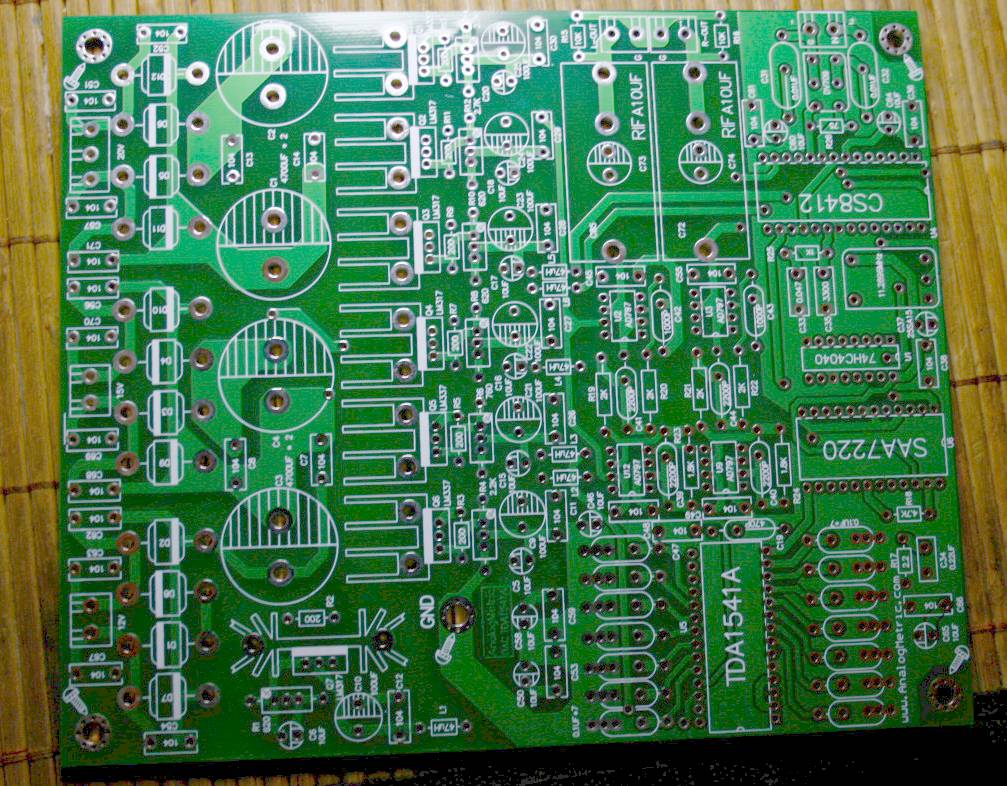
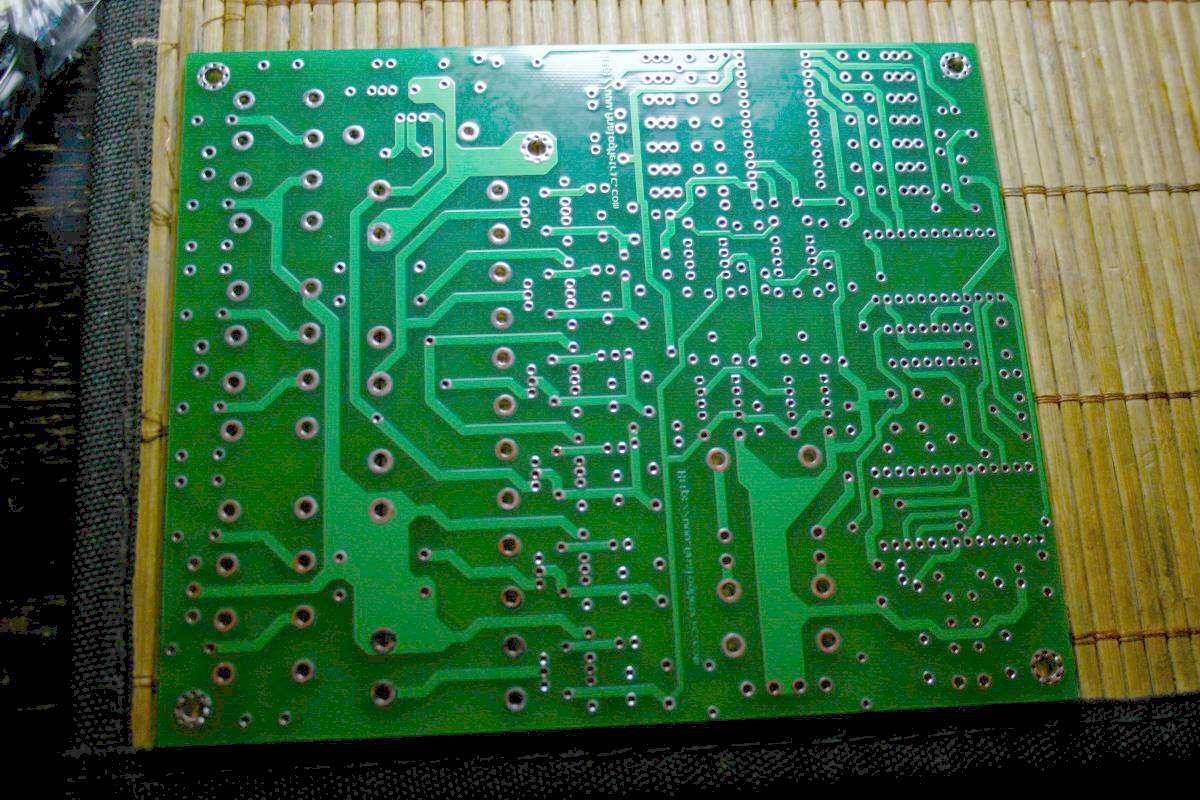
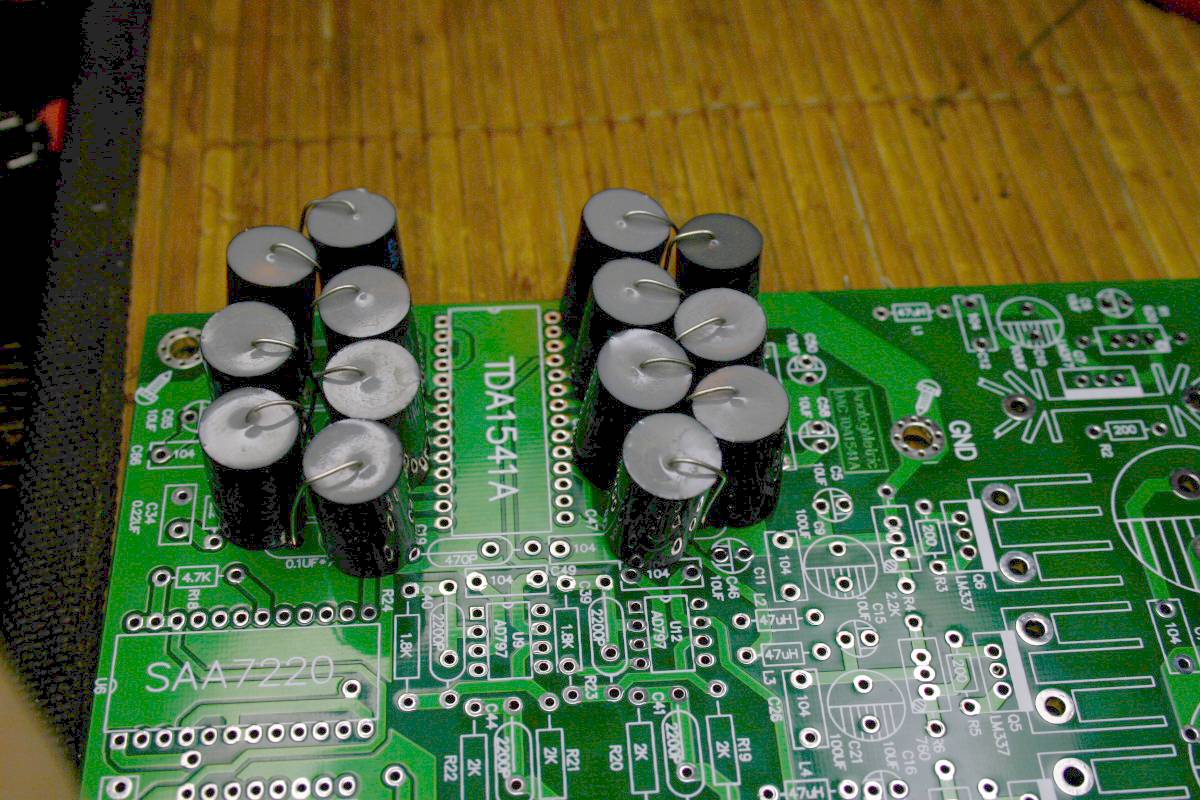
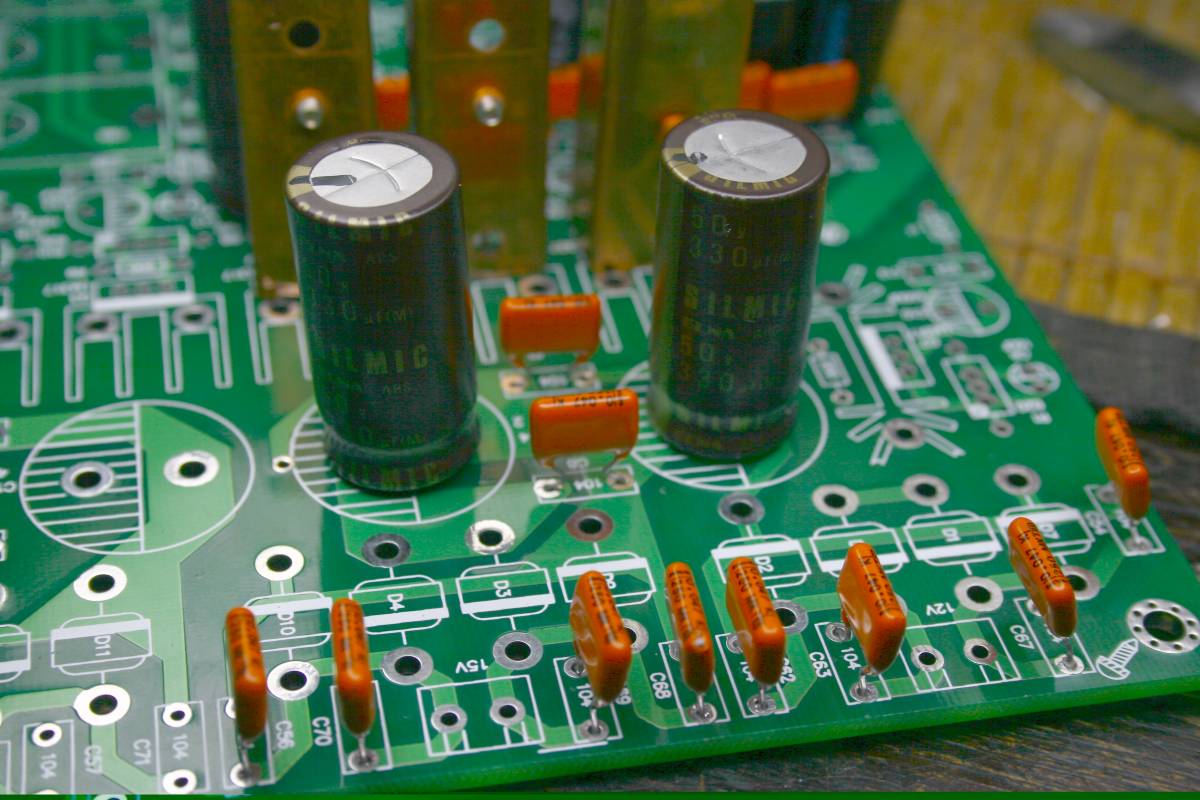
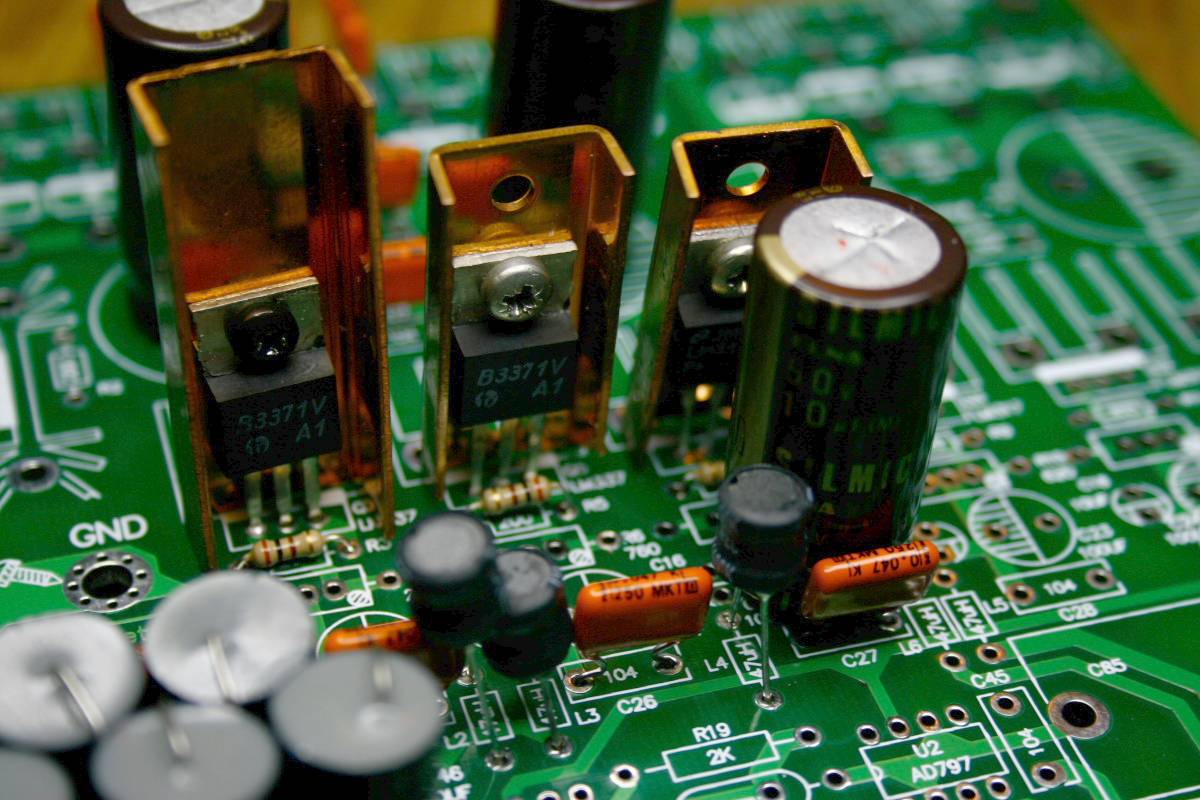
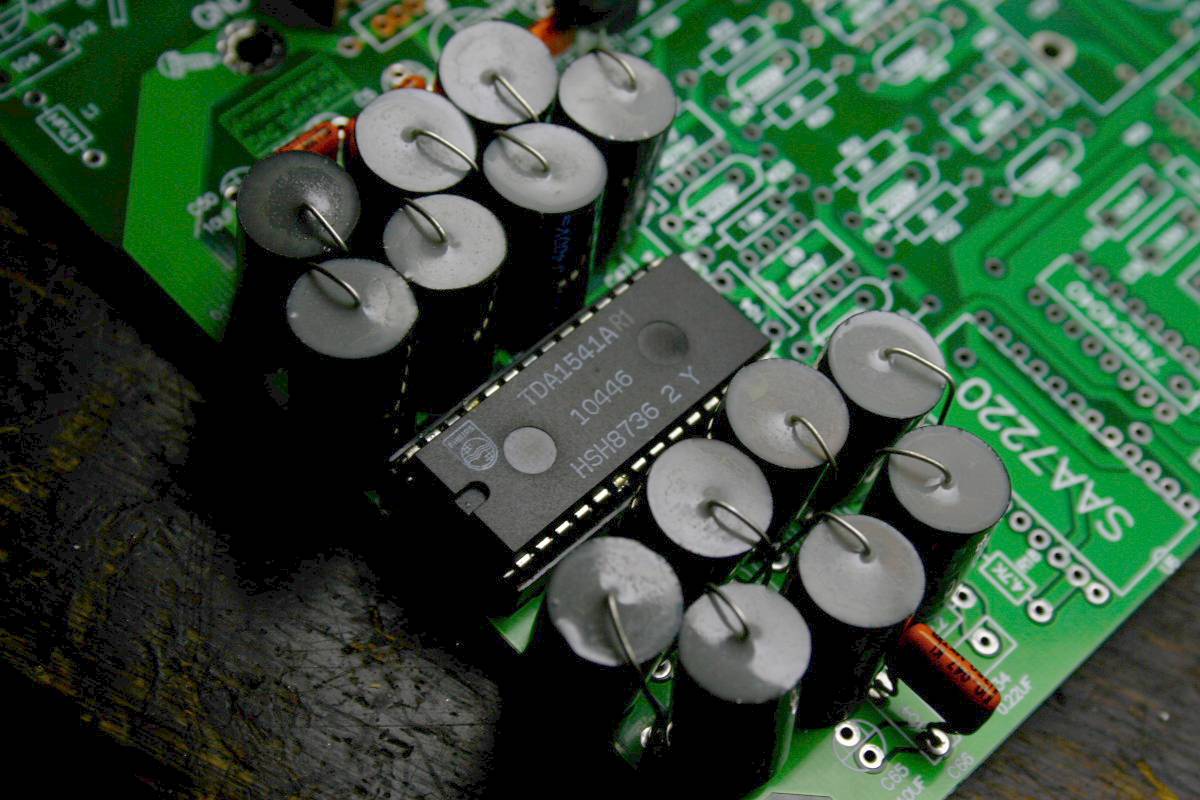
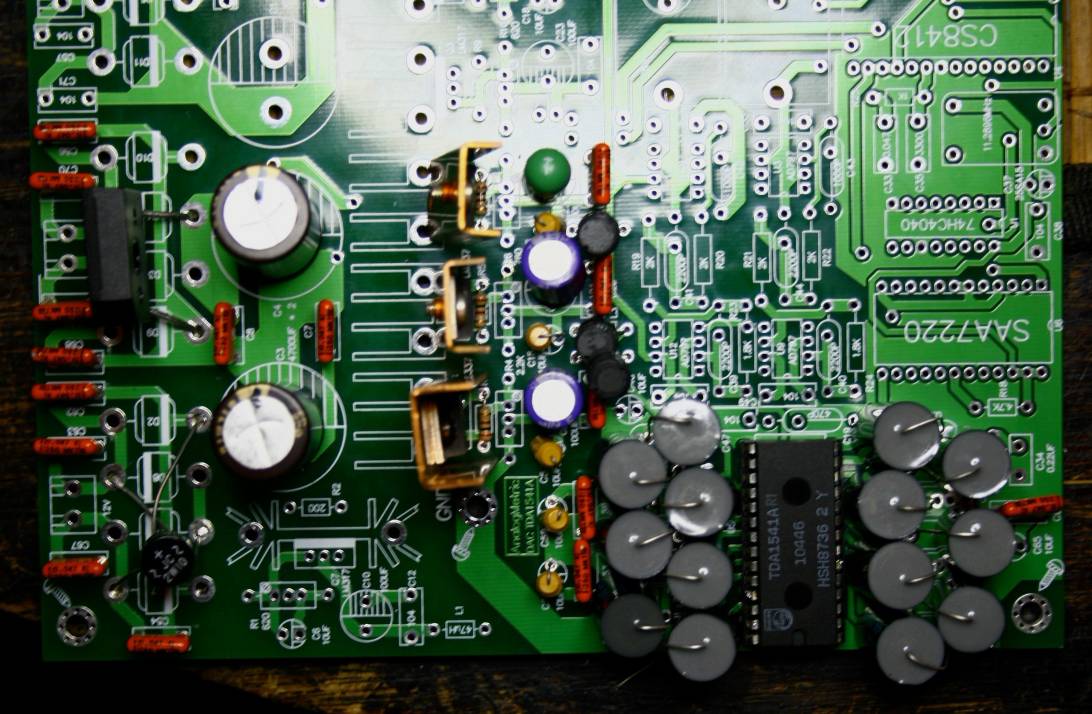
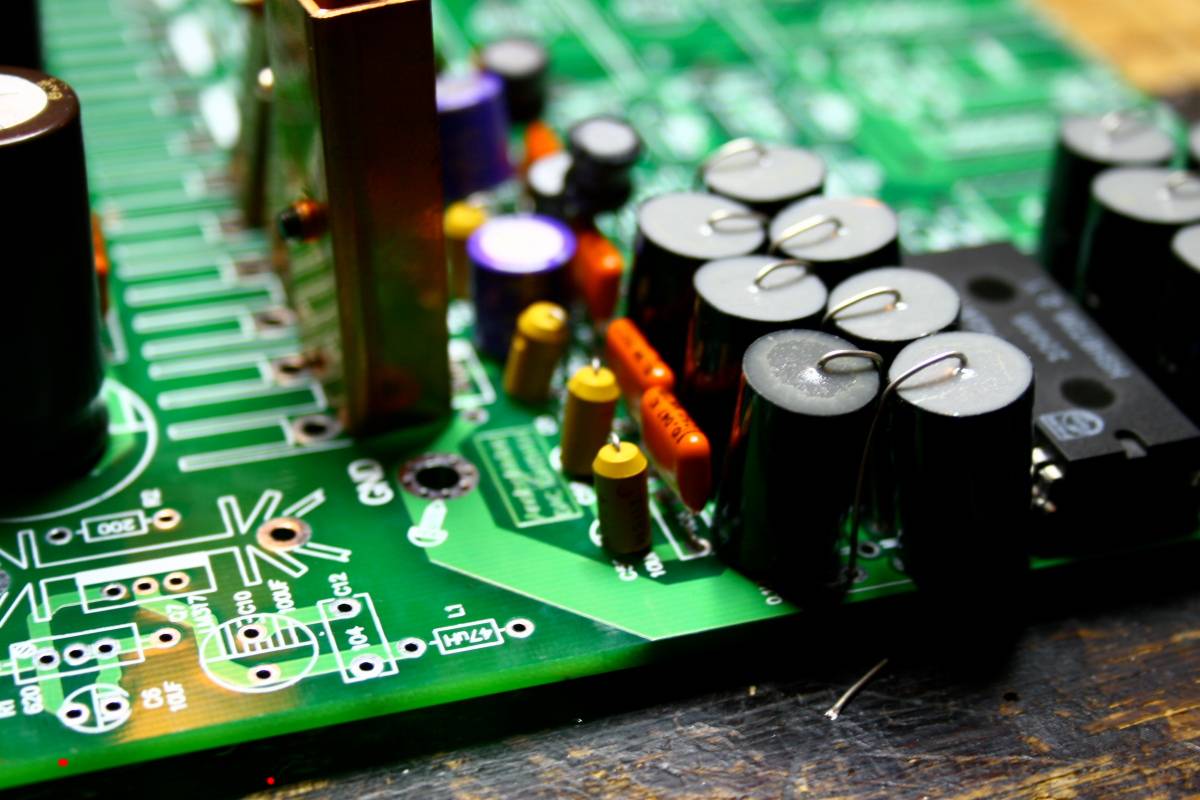

On the above photos you see my prototype ready to go. Big part of the
PCB is un-populated. That is all I need before I hook up the missing
parts: receiver, lampizator and 15 V transformer.
I have not yet played this DAC but the result is pretty easy to guess.
There is nothing that can go wrong. This will be the TDA at it's best.
The finest analog-like DAC that I can imagine, able to compete with the
other two contenders which belong in the TOP THREE - the Buffalo and
the AudioNote DAC4.
The final comparison is scheduled for february.
I've had enough - I go on vacations now.
Till next time.

